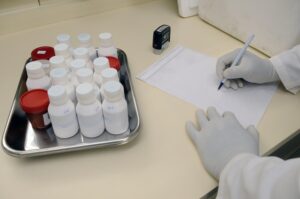Call for your appointment today 914-666-4665 | Mt. Kisco, New York

The working group, led by Dr. John Aucott of Johns Hopkins Lyme Disease Clinical Research Center, released its first report in 2018. The report included multiple suggestions to address the “serious and growing threat of tick-borne diseases.”
Authors of the report called on the government to invest more funds in research, prevention and treatment of tick-borne diseases.
In a recent article published in the journal Science, Jennifer Couzin-Frankel points out that several foundations have focused their efforts, in part, on addressing, what she refers to as “the third rail of Lyme disease: how Borrelia bacteria persist.” [1]
“Foundations are keen to address the third rail of Lyme disease: how Borrelia bacteria persist—if they do—in treated patients who don’t get better,” she writes.
[bctt tweet=”Will NIH funds for Lyme disease be used to study the persistence of Borrelia bacteria even after treatment?” username=”DrDanielCameron”]
 Three well-known foundations have supported studies that examine how and if the Borrelia bacteria remain active following standard antibiotic treatments.
Three well-known foundations have supported studies that examine how and if the Borrelia bacteria remain active following standard antibiotic treatments.
● The Steven & Alexandra Cohen Foundation has spent more than $42 million on Lyme and other tick-borne diseases since 2015.
● And in recent years, the Global Lyme Alliance and the Bay Area Lyme Foundation, have together spent more than $20 million.
In 2018, the National Institutes of Health (NIH) spent $23 million on Lyme disease but it is not clear how much of those monies went to studying the persistence of the bacteria.
Just months after the working group released its first report, the NIH “serendipitously, issued a rare solicitation for prevention proposals in tick-borne diseases,” she writes. “The new pot of money, $6 million in 2020, represents a significant boost.”
The agency’s strategic plan is due out this summer.
Editor’s note: I hope that these new monies will address the third rail of Lyme disease.
References:
- Couzin-Frankel J. Lyme disease research gets a needed boost. Science. 2019;364(6437):221.




I was sick with un-diagnosed Lyme starting in 1987. After being a patient for over 20 health care providers, I found Dr Sam Donta (since retired) who put me on Clarithromycin/Hydroxychloroquine and symptoms vanished after 3 weeks. While I continue the treatment (it is not a cure) my overall health has never been better. I hope other will also find that this solution helps. Finding a doctor to provide the prescription may be a challenge (hint, hint). -Daren